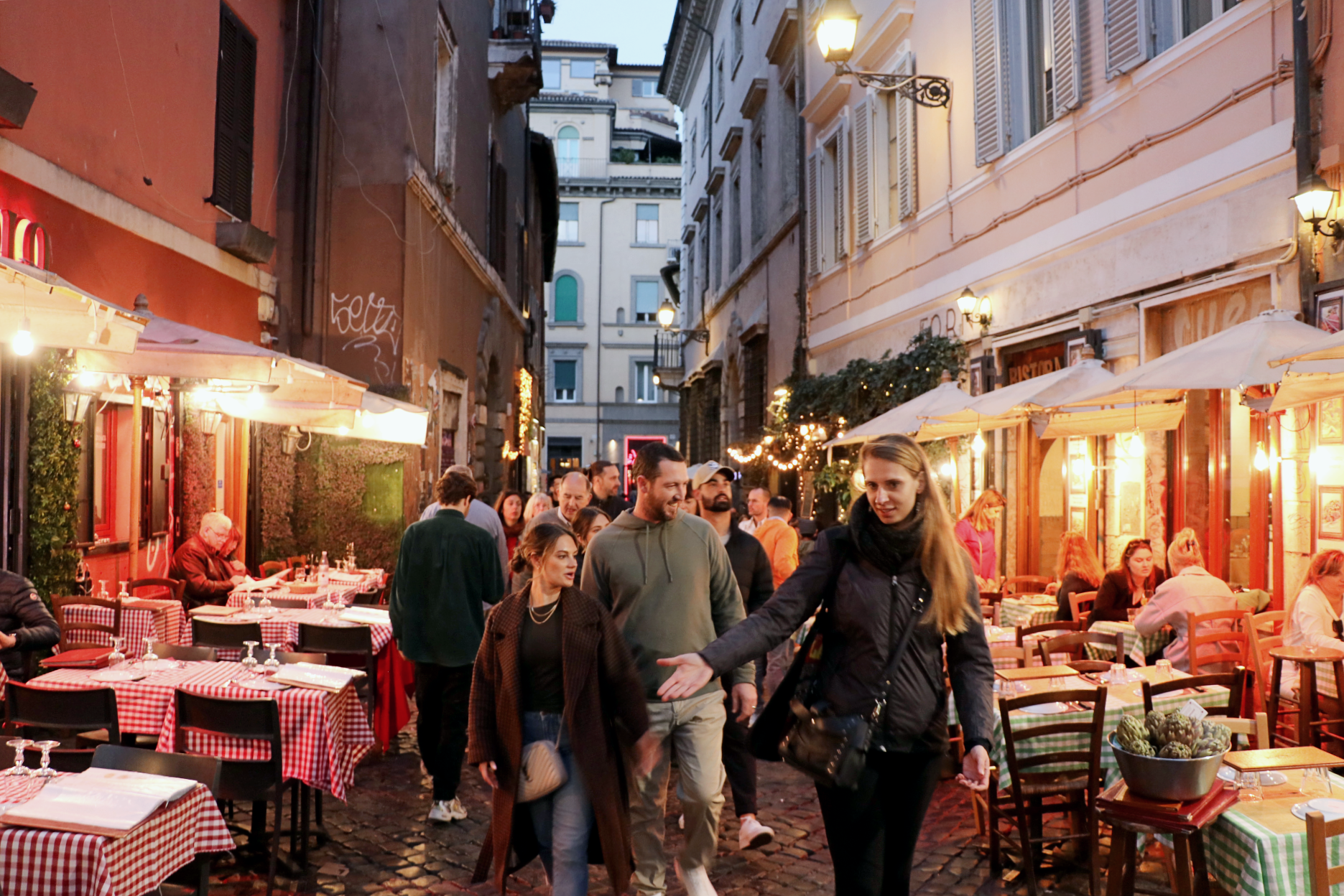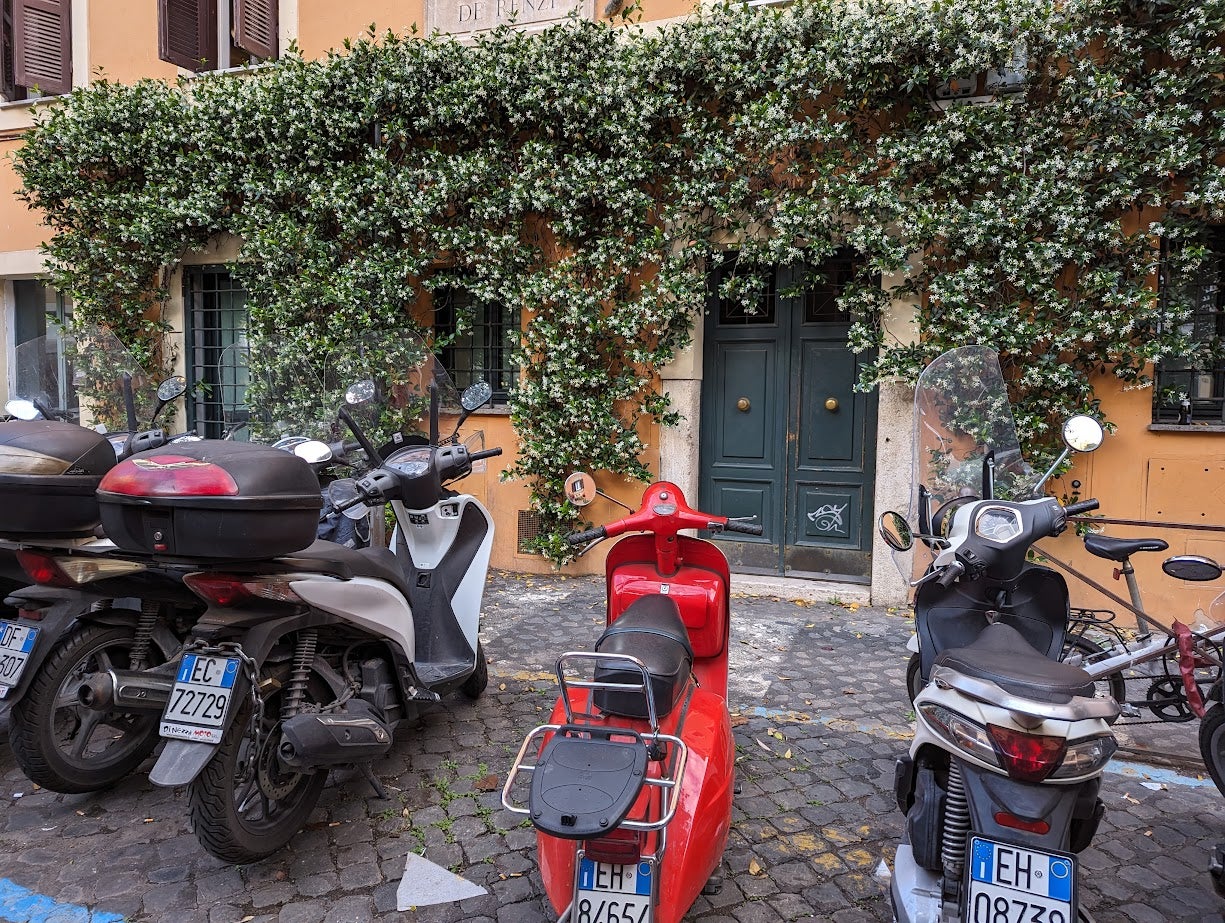The Independent's journalism is supported by our readers. When you purchase through links on our site, we may earn commission.
This ivy-clad Rome neighbourhood is where the locals come to eat
In search of the best traditional food in the Italian capital, Suzy Pope ventures across the Tiber to the ancient working-class district of Trastevere, where she finds hidden osterias and bustling trattorias

Your support helps us to tell the story
From reproductive rights to climate change to Big Tech, The Independent is on the ground when the story is developing. Whether it's investigating the financials of Elon Musk's pro-Trump PAC or producing our latest documentary, 'The A Word', which shines a light on the American women fighting for reproductive rights, we know how important it is to parse out the facts from the messaging.
At such a critical moment in US history, we need reporters on the ground. Your donation allows us to keep sending journalists to speak to both sides of the story.
The Independent is trusted by Americans across the entire political spectrum. And unlike many other quality news outlets, we choose not to lock Americans out of our reporting and analysis with paywalls. We believe quality journalism should be available to everyone, paid for by those who can afford it.
Your support makes all the difference.I hope you’re hungry,” my guide, Dimitri, says. We’re strolling through Rome’s Centro Storico, but in the opposite direction to the Colosseum and Pantheon. I’ve joined a food tour with The Tour Guy, searching for Rome’s best traditional food. For that, Dimitri says we need to cross the Tiber into the city’s first suburb: Trastevere.
Like most vibrant hubs of nightlife and dining, Trastevere has deep working-class roots, but not ones embedded in industry and warehouses. This neighbourhood’s history is ancient. In the heyday of the Roman empire, it was home to fishermen and sailors who worked on the River Tiber, and it became the refuge where Roman slaves lived as freedmen after their servitude in the city.
“No food is from Italy,” Dimitri says as we walk. He’s a Rome native, fiercely proud of the food and drink here, but he admits that most of Italy’s most famous dishes are originally from elsewhere. “Dried pasta from China, via Arabia, and pizza from Greece,” he adds. The Roman empire’s vast tentacles across continents brought produce and culinary techniques from far and wide into Rome, and shaped the identity of “Italian” cuisine today.

During this time, foreigners were not allowed to own property in Rome, so many settled across the river in Trastevere, creating a melting pot of flavours and cooking styles from the furthest fringes of the empire. Today, the narrow streets are still a hive of activity after sundown, and you can feel the down-at-heel roots of the area in each ramshackle osteria and packed trattoria.
We begin just over the Tiber from Trastevere, in Campo de’ Fiori, by sampling prosciutto de parma and cheese in a deli that has traded for centuries. Dimitri (the self-styled “tallest guide in Italy”) has to stoop to avoid his head brushing against the hundreds of legs of parma ham hanging from the ceiling.
Read more on food and drink travel:
We move on to a surprising Roman dish: deep-fried cod. Ancient trade links between Rome and Portugal introduced this staple to the capital. When a restaurant bears the name of the only dish it serves, you know it’s going to be good. Filetti di Baccala is no exception, serving a crisp, light battered cod alongside cold carafes of pecorino wine. I know I should pace myself – we haven’t even reached Trastevere yet – but I gobble up the lot.
“Trastevere is where Roman people come to eat,” Dimitri says as we cross the Ponte Sisto over the pale green Tiber. Buskers beatbox or squeeze accordions on the old stone bridge. On the other side, crowds of young Romans laugh and drink around the Piazza Trilussa, named after the local poet Trilussa – known to enjoy a tipple or two. Plastic cups of neon-bright Aperol spritz and bottles of Peroni circle around the piazza, sipped in his honour.

Chain restaurants are few and far between in Rome, and even more sparse in Trastevere. “I had my first burrito just last week,” Dimitri says as we pass a doner kebab shop that specialises in carbonara kebabs. “And, have you seen? We have sushi restaurants now.” He says this with a hint of pride. While in ancient times this suburb was the centre of global cuisine, little has changed over the centuries – and modern-world foods are only just starting to seep into the streets of Trastevere. “Burgers are like a special treat,” Dimitri adds.
Every ivy-clad street and cobbled alleyway seems to be lined with osterias, trattorias and traditional restaurants. There are hole-in-the-wall spots for food on the go, like I Suppli, which has a near-constant queue. People emerge from the takeaway shop with fried balls of rice called suppli, a Roman version of Sicilian arancini. While arancini are bigger and stuffed with peas and ragu, suppli are usually filled with a rich tomato sauce and mozzarella, described as al telefono (like a telephone) – when you pull it apart, the long string of mozzarella is like an old-fashioned telephone wire. It’s a delicious introduction to an evening of good food.

Spritz and wine bars spill out into Piazza di Santa Maria, sunglasses winking in the dying light as revellers soak up the evening sun. Before filling up further, we pause for a spot of culture. Inside the 12th-century Basilica di Santa Maria, golden mosaics adorn the walls and ceiling. It’s considered to have been the first place of Christian worship in Rome, and, while it may not bear the same fame as the Sistine Chapel, it is (in my opinion) just as impressive. Plus, there’s no queue to get in.
Speaking of queues, we pass two of Trastevere’s most popular restaurants: Nannarella and Tonnarello. Both have snaking queues and it’s only 6.30pm. It’s another two hours before local Trasteverians think about sitting down to dinner. I tell Dimitri I’ve been to Nannarella for their world-famous carbonara, and he laughs. “Of course you have,” he says. “Nannarella used to be a real Roman place, but now it’s just for tourists.” Indeed, most people in the queue have an American twang or are scrolling through Tripadvisor reviews on their phones. “Don’t worry, I’m taking you somewhere better,” he adds.
We waltz past the queue outside Da Vittorio to our reserved table. Having stayed in Trastevere a few times before, I know it’s difficult to secure a table at the popular restaurants. After many instances of tourists not showing up for bookings, staff often say reserving is not possible, despite seating locals at tables marked “reserved” in front of you. A food tour takes the uncertainty out of the situation.

“You won’t find a better amatriciana than here,” Dimitri says. So we forgo the Roman classic carbonara for a generous sample of amatriciana and cacio e pepe. The idea of spaghetti may hail from China originally, but the amatriciana sauce is from the fields surrounding the town of Amatrice in Lazio, and is a medley of fresh tomato, a hint of chilli (thanks to trade routes with Szechuan), and salty porchetta strips to cut through the tang. Cacio e pepe could be called the simple cousin of carbonara – spaghetti, eggs, pecorino cheese and plenty of black pepper (originally from a spice route to southern India).
After the primi course – usually a filling plate of pasta – I barely have room for the secondi. But a plate of saltimbocca alla Romana arrives, and it’s too good to pass up. Tender veal cutlets are wrapped in prosciutto and finished with a hint of sage to combat the intense salty flavour. Despite being a dish symbolic of Rome, rumour has it that it originated in Breschia and was adopted by Rome in the 18th century. Finishing the last bite, I let out an involuntary groan and Dimitri laughs. “You’re full,” he observes. He’s right. “But there is always room for gelato.”
“See how the gelato is hidden in metal containers?” Dimitri points out. “That means it’s real. Made with fresh strawberries and real nuts. The shops with the gelato on display, covered in syrup and fruit? They may look good, but it is fake flavours.”

Our final stop is a late-night gelato and coffee shop, where I order a scoop of strawberry and a scoop of pistachio. The colour is more subdued than a TikTokker would like, but the flavour is divine. It’s the perfect cherry on top of a balmy evening in Trastevere, slurping a cup of gelato at an outdoor table as tourists, students and Roman locals laugh and wander between the bars.
“Where does gelato come from?” I ask Dimitri, expecting it to have traversed an ancient trade route like everything else.
“Gelato is actually Italian,” he says with a smile. “But it’s originally from Florence, not Rome. Nothing is from Rome.”
How to get there
Two major airports serve Rome. Fiumicino (also known as Leonardo da Vinci airport) accommodates larger airlines like British Airways and Vueling, which both offer direct flights from London. Ciampino airport is predominantly for budget carriers like easyJet, Ryanair, Wizz Air and Jet2. There are roughly 22 direct flights a day between Rome and London, and direct routes from most regional airports multiple times a week. Flight time is roughly 2 hours 30 minutes.
It’s also possible to reach Rome by train from the UK, usually taking a day and a half from London. Catch an early Eurostar to Paris, then the high-speed TGV or Frecciarossa from Paris to Milan. From Milan you can catch a train the following day to Rome, taking just three hours on the fastest Trenitalia service. Note: a landslide has affected the line between Paris and Milan, so changing at Geneva in Switzerland will be required until 2025, but the route from Geneva to Milan is particularly scenic.
Read more: Italy travel guide – everything you need to know before you go
Join our commenting forum
Join thought-provoking conversations, follow other Independent readers and see their replies
Comments